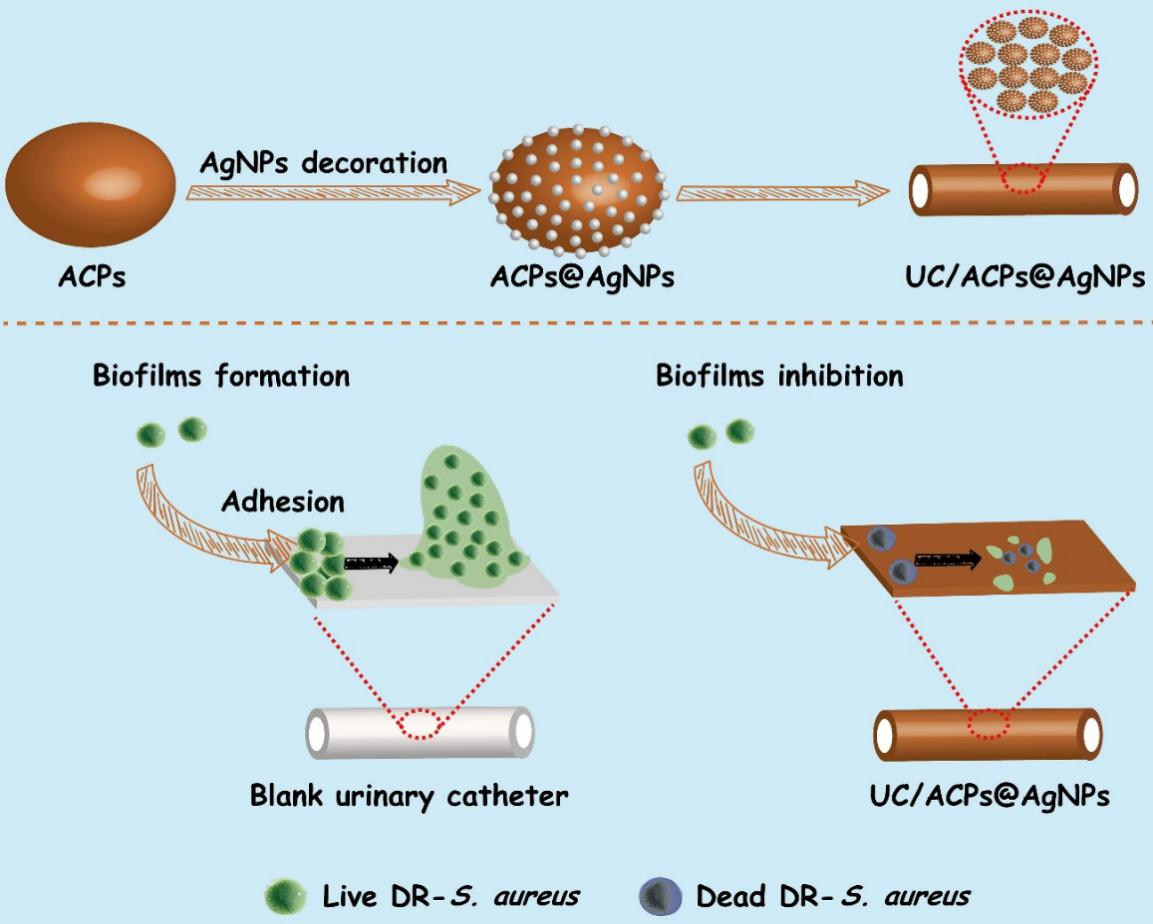Recently, Qiang WU & Chaoqun LIU’s group from School of Pharmacy have made progress in constructing long-term antibacterial Urinary Catheter. The research achievement have been published on ACS Applied Materials & Interfaces (JCR Q1, IF=9.2) in title “An Amphiphilic Carbonaceous/Nanosilver Composite-Incorporated Urinary Catheter for Long-Term Combating Bacteria and Biofilms”. Dr. Chaoqun Liu and Prof. Qiang Wu was the first author and corresponding author of this paper, respectively. Paper URL: https://pubs.acs.org/doi/10.1021/acsami.1c07399.
Urinary catheters are being extensively utilized in the clinic for treating urinary retention, managing urinary incontinence, and releasing urine after genital or prostate surgical operation. Nevertheless, hospital patients are facing the risk of developing catheter-associated urinary tract infections, whereas the formation of biofilms on the inner and outer surfaces of urinary catheters further strengthens the issue. The high rate of biofilm-related urinary tract infection not only becomes a primary common health problem but also raises the costs for the nation’s public health system. Hence, developing a bactericidal urinary catheter that can sustainably prevent biofilm formation is urgently needed.
In this paper, Qiang WU & Chaoqun LIU’s group developed a new strategy by introducing amphiphilic carbonaceous particles decorated with AgNPs into silicone rubber to fabricate a sustainable Ag ion-releasing urinary catheter that could effectively inhibit bacterial growth and resist biofilm formation. Amphiphilic carbonaceous particles (ACPs), which are derived from yeast by a hydrothermal carbonization process, possess abundant functional groups, a favorable amphiphilic nature, and satisfactory mechanical properties. The amphiphilic nature of ACPs enables the homogeneous distribution of ACPs@AgNPs inside silicone rubber to produce a uniform urinary catheter (UC/ACPs@AgNPs). As expected, UC/ACPs@AgNPs exerted a sustained Ag ion release ability over 30 days. Moreover, UC/ACPs@AgNPs present strong biocidal activity and excellent capacity to combat biofilm formation in vitro and in an in vivo rabbit model. This design holds great promise for developing advanced long-term antibacterial urinary catheter against bacterial biofilm formation.

Schematic Illustration of the Preparation of Amphiphilic Carbonaceous Particles Deposited with Silver Nanoparticles (ACPs@AgNPs) and Their Incorporation into a Urinary Catheter Material to Prepare a BRUC (UC/ACPs@AgNPs) for Antibiofilm Application
This work is supported by grants from the National Natural Science Foundation of China, the Natural Science Foundation of Henan and the Key Technologies R & D Programme of Henan.



